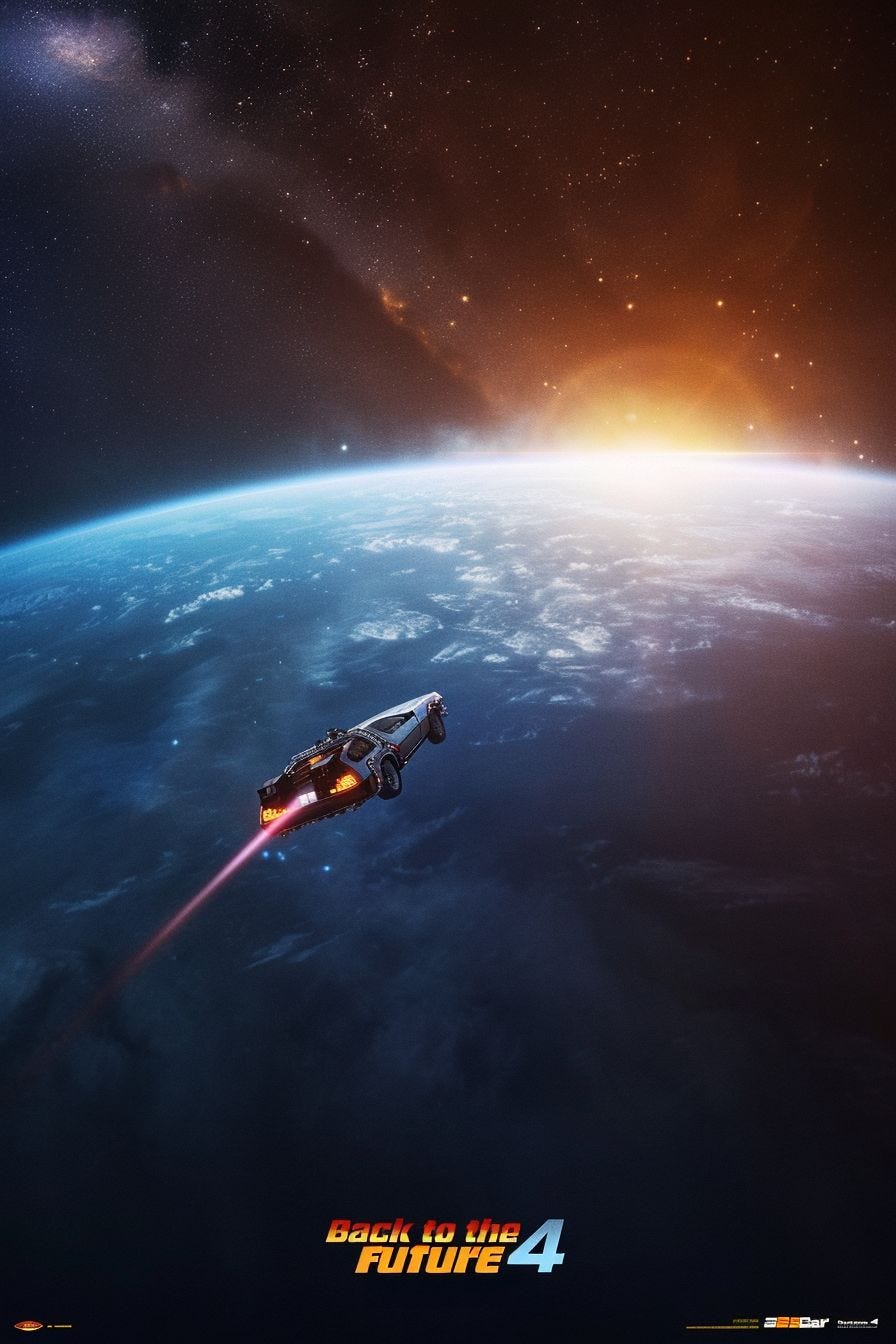Multilarity #2: Futures in Fours
Explore Futuristic Frameworks: From Dystopias to Utopias and Personal Tomorrows
This week, we fast-forward to the future, where we'll imagine humanity's ultimate destiny and our personal tomorrows. We’ll frame our exploration through a constraint of the number four. Each futurism framework will entail either four categories, four predictions, etc. By segmenting our foresight in this way, we can spark the power that comes when combining creativity with constraints. Dividing the future into a nice even “four” will help give shape to this speculative topic.
As always, please consider sharing or subscribing if you’re new here. Your support means the multiverse!
Dave Karpf delineates futurists into four archetypes: “the pundit, the professional optimist/futurist, the Cassandra and the sci-fi author”. He writes about how each approaches the future and their inherent biases, providing a mental model we can equip ourselves with on this topic. I find particularly interesting the relationship that exists between science fiction and technology companies — hilariously exemplified by this X post from the essay.
Nick Bostrom’s paper is an electric philosophical tour through the future of humanity. He outlines four potential futures with clarity and logic: posthumanity, extinction, recurrent collapse, and plateau. He considers the likelihood of each possibility, at the end reaching a dangerous coin flip between a posthuman society and our extinction. While some may fear the possibilities of a posthumanity (digital uploads evoke Black Mirror nightmares), for most it’s a better outcome than outright annihilation. Readwise clocks this in at a 49 minute read, but it’s well worth the time. Bostrom’s work has enthralled my mind over the years with work across simulations, aliens, and AI. Expect more Bostrom brilliance in future editions of this newsletter.
When one imagines the future, there are usually two clear options: utopia or dystopia. When reviewing the history of culture and science fiction, it appears that dystopias have won the battle of public consciousness. 1984, Brave New World, and other modern incantations seem to diagnose our society’s ills with familiar foreshadowing. In this brief essay by Darren Allen, he explores the four types of dystopia: Orwellian, Huxleyan, Kafkaesque, and Phildickian. He says:
“All modern societies, for example, are both Kafkaesque and Phildickian (indeed virtual Phildickia can be seen as a modern refinement of the hyper-literate Kafkastan) with either a Huxleyan or Orwellian overarching framework…”
With Apple’s Vision Pro currently capturing the cultural zeitgeist, a little reminder of the Phildickia dystopia can help remind us that all technology is neutral — it’s up to us whether it’s used for peril or prosperity.
Next up, the “techno-futurist political compass.” It might picture sixteen futures, but hey, four times four works for this newsletter 😎. High tech comfort in a Dyson Sphere sounds good to me.
Lastly, before our next section, since we’re on the topic of futures & four, here’s a ChatGPT synopsis for Back to the Future 4, prompted by feeding it this poster made in Midjourney.
In "Back to the Future 4," the time-travel saga takes a cosmic turn. Marty McFly and Doc Brown embark on their most audacious adventure yet when the DeLorean is upgraded with interstellar capabilities. After a mysterious alien artifact is found in 1985, the duo must race against time and space to prevent a universe-altering paradox. Traveling to different eras and galaxies, they encounter new civilizations and old foes, all while grappling with the implications of their time-traveling escapades. As the fabric of reality begins to fray, Marty and Doc face the ultimate challenge: to rewrite the rules of time and space to save the future.
Idea in Action
In his newsletter New World Same Humans, David Mattin shows how Jame Dator’s futures framework can be applied to your own life. Although this was written during the first year of covid, it’s still relevant today. As David writes, “… the Four Futures framework is a powerful tool to reignite your thinking on where you’re at now and what is next.”
Here are some questions for further self-reflection based on this topic:
Go through the four futures framework, which category are you currently in? How can you get to the one you want?
What are four possible futures you envision for yourself? Which do you want to happen?
What type of future do you want for humanity as a whole? Do you have any part to play in getting us there?
Do you have a healthy relationship with technology? How can you leverage current technology trends to improve your well-being?
Thanks for reading! Please consider sharing this newsletter or subscribing if you are new here.
Multilarity represents a synergy of human imagination and AI capabilities, reflecting a new era of collaborative writing. AI assists in maximizing clarity and creativity in this newsletter with things like brainstorming, curation, grammar, language refinement, and summaries. Multilarity encompasses a multiverse of ideas and words, spanning across time, various programs, and the minds of both myself and those whose work I curate. The future has arrived!




